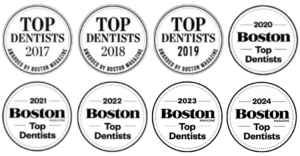What You Need to Know about Dental Bridges vs Dentures
Have you lost a few of your teeth but have not been able to get dentures or dental bridges? You may have been thinking about visiting your dentist to discuss the best tooth replacement options for you, such as dental bridges or partial dentures. A dental bridge could be an ideal solution for you.
This article will discuss essential things you need to know about dental bridges and dentures. This should give you a good idea of which option is a better fit for you.
Here’s what you need to know:
What Are Dental Bridges?
Dental bridges fill the space where a few teeth are missing. They can be fixed or removable. As the name suggests, they fill the gap left by missing teeth by connecting the two teeth next to the missing teeth. The crowns of the two teeth are connected to create a bridge, which helps you close your mouth correctly.
There are three basic types of dental bridges:
Traditional Metal Dental Bridges
Traditional metal teeth bridges use metal teeth or a combination of metal and porcelain to fill a space.
Because metal is strong and sturdy, it is the most widely used material to make attachments or anchor teeth to your existing teeth. These bridges can last anywhere from 10 to 20 years, depending on their construction, how well you look after them, and the amount of daily wear they receive.
Cantilever Dental Bridges
Cantilever bridges are also used to fill the space where a few teeth are missing. They are built similarly to metal dental bridges, using crowns to connect the two teeth. In this case, however, the teeth are not side by side. Instead, the two teeth are separated a little bit on either side.
In the case of cantilever dental bridges, the anchor teeth are called the pontics, and the teeth that the pontics are connected to are called the abutments. In this case, the abutments are the two front teeth on either side of the gap.
Maryland Bonded Bridges
Maryland bonded bridges are usually used to replace a gap containing three or more teeth. These bridges are the least common type and the most expensive. They use a combination of metal and porcelain to fill the space.
What Are Dentures?
Dentures are removable teeth replacements. Dentures are designed to follow the shape and size of your natural teeth. A denture will have a metal framework called clasps that secure it to your gums and hold the dentures in place.
When you wear dentures, you will be able to chew and eat your favorite foods, but you may still need help when cutting and grinding your food.
Dentures are made using dental implants, which can be placed into your jawbone by your dentist. If your mouth is missing all of your teeth, dentures may be an option. However, if you have a few teeth missing and a dental bridge could be used, it is worth exploring this option since dental bridges are more natural.
Key Differences between Dental Bridges and Dentures
Because dental bridges and dentures serve the same purpose—to replace missing teeth—they are often compared. But because they are made to do two different goals, they are often used for different situations.
A denture is a removable and false replacement for your teeth. It is not fixed, and you can take it out of your mouth and put it back in whenever you want. Dentures can be used if you have all or most of your teeth but would like something permanent that is easy and less expensive.
A dental bridge is a false tooth replacement fixed in place and secured to your dental structure by a dental crown. A dental bridge is generally used when more than one tooth is missing, as it helps to fill the gap.
The Bottom Line
Dental bridges are used to fill the space created by missing teeth. They can last for about 15 years if taken care of properly. Dentures are removable false teeth that are used to replace missing teeth. They can be used if you have lost all your teeth and need something permanent.
Both options offer a solution to missing teeth, but as stated above, not all solutions are ideal for everyone. If you are thinking of getting a dental bridge, you need to consider your dental health history and lifestyle. The same goes for when you are thinking of getting dentures.
If you are looking for a reliable cosmetic dentist in Lexington, we’re here to help. Lexington Smile Studio was established in 1991. To this day, it sets the standards for exceptional care. We provide a full range of dental services for your entire family. Our dental services include cosmetic dentistry, prosthodontics, implant dentistry, periodontics, and laser dentistry. Contact us today to learn and get started.



